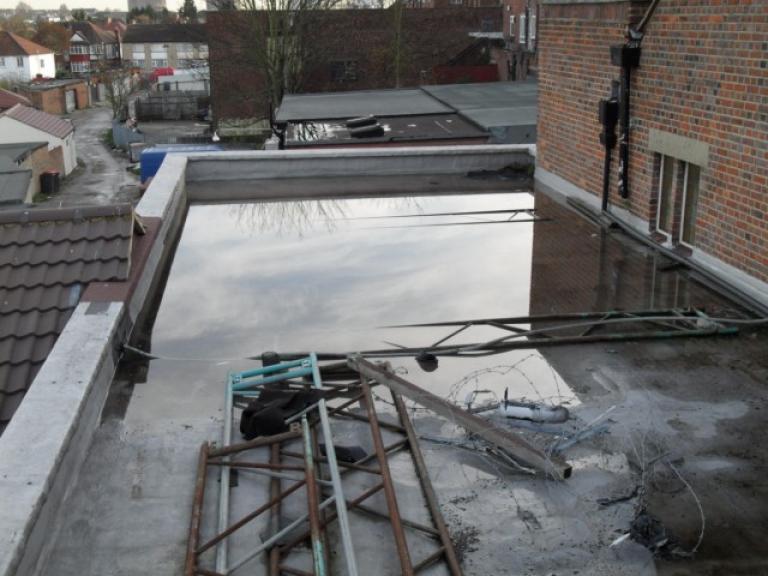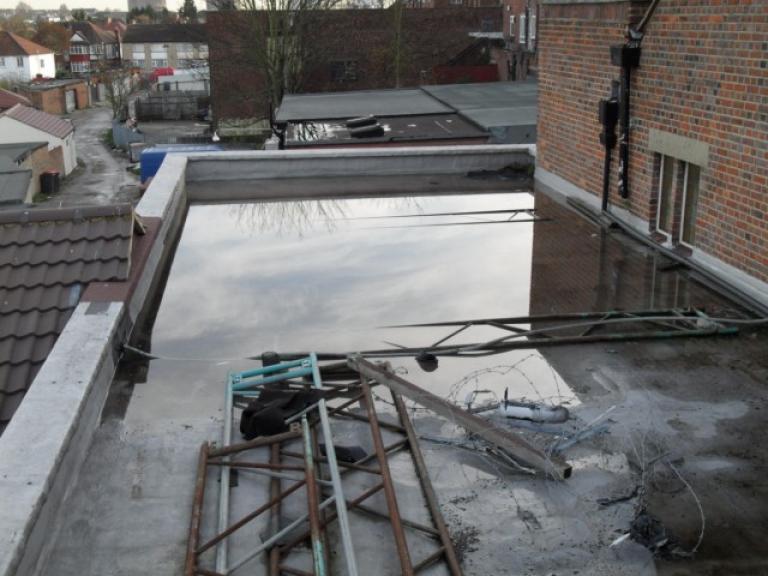Warm roofs are insulated roofs with a very low "U-value": 'U-value' measures the rate at which heat transfers over time through a building element (e.g., the roof). The better your roof retains heat, the lower your roof's U-value. All roofs need to be insulated but warm roofs can be insisted upon by building regs, especally where a new roof joins a main building. Because the polymer roofing system reuses spent plastic particles, it retains the thermal insulation properties of plastic, making it an ideal choice for the job (it works for 'cold' roof insulation too - click through to see how we help with each). It's also jointless and seamless, making it harder for heat to escape, and can be tapered to ensure good water drainage.
Warm Roofs

Colindale's United Reformed Church in Northwest London (NW9) contacted us with an enquiry about an urgent job on their flooded single storey roof. They attached drawings, notes, and pictures, giving us a thorough idea of the problem, and added that channels would need to be formed in the exiting levelling screed to aid drainage. They also told us new pans and connections would be required at the two drainage points. They were particularly…

What is a 'warm roof' and what's the difference between a 'warm roof' and a 'cold roof'?
For living green turf and sedum roofing click here
Government guidelines state that ALL roofs should be insulated - but the thickness of insulation required depends upon insulant used and whether you're creating a cold or warm roof:-
'Warm roofs': Warm roofs are insulated roofs with a very low "…